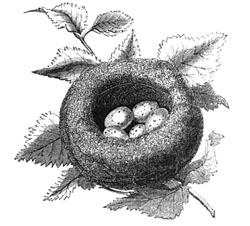|
| Magriel's NYT Columns |
 The men on the backgammon board should be viewed as valuable resources, always in scarce supply. To get the maximum potential out of every position, you must use these resources efficiently. For example, it is important to avoid taking men out of play by stacking too many on a single point or making points too deep in your home board. A more subtle method for efficient use of your men is to strive to create “natural formations” with them.
The men on the backgammon board should be viewed as valuable resources, always in scarce supply. To get the maximum potential out of every position, you must use these resources efficiently. For example, it is important to avoid taking men out of play by stacking too many on a single point or making points too deep in your home board. A more subtle method for efficient use of your men is to strive to create “natural formations” with them.
In the diagram, Black on the previous roll had gambled by leaving a single man on the 5-point, which White fortunately failed to hit. Now with the roll of 2-1, Black must concern himself with the best possible way to cover the man he slotted.
|
| Black to play 2-1. |
In the game, Black made the obvious play, 6/5, 13/11, making the 5-point and bringing down another man from the mid-point. (Black correctly rejected splitting his back runners with 24/22 as too dangerous in view of White’s heavy concentration of builders.)
The correct play is 6/4, 5/4, making the 4-point instead of the 5-point. Although generally the 5-point is more important, in this case distribution considers prevail. This becomes apparent through comparing the formations that result from making the 5-point as opposed to the 4-point.
|
|
|
In general, whenever you have two points on your side of the board exactly six pips apart, there is a built-in “redundancy” in the formation. One way to visualize this is to notice that points six pips apart can never be part of the same prime. A prime can be only six points long; a seventh point is useless.
Because this type of play is not flashy or dramatic, it may seem inconsequential and is easily — almost always — overlooked. Using men to their maximum potential, however, is a key to consistent winning results.
Rollout
 Tom Keith 2013 |
|
Money play Centered cube Black rolls 2-1 1296 games with VR Checker play: 2-ply Cube play: 3-ply Red |
| 2-1: | Game | G | BG | Equity | ||||
| 1 | 13/11, 6/5 |
W L |
.3980 .6020 |
.0866 .2240 |
.0033 .0205 | −0.4924 |

| (a) |
| 2 | 6/4, 5/4 |
W L |
.3920 .6080 |
.0857 .2220 |
.0035 .0203 | −0.5127 | (0.0203) | (b) |
| 3 | 6/5, 6/4 |
W L |
.3996 .6004 |
.0829 .2525 |
.0039 .0301 | −0.5478 | (0.0554) | |
| 4 | 8/5 |
W L |
.3831 .6169 |
.0853 .2226 |
.0041 .0191 | −0.5629 | (0.0705) |

|
|

